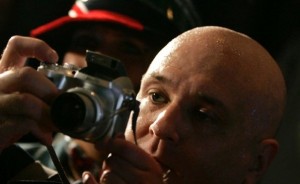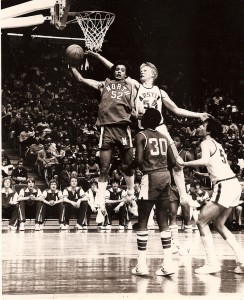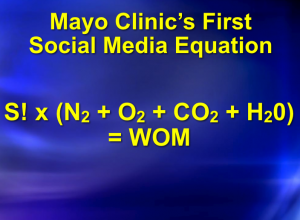
I’ve known Vince Muzik for nearly four decades, ever since I took piano lessons from his mother, Jan. (Yes, my piano teacher was Mrs. Muzik.) But it gets even better: Vince’s father, Conrad, was the Austin High School band instructor, so when I played trombone (until 9th grade) my instructor was… Mr. Muzik.
Vince’s love was photography, though, and particularly relating to sports. He got his first chance to shoot a big statewide event when he was a teenager, and the Austin Daily Herald got him press credentials for our basketball team’s trip to the state high basketball tournament in 1981. We were 22-0 going into the tournament, but faced the also-unbeaten (and defending champion) Minneapolis North in the first round. Here’s a photo Vince took at that game (can you tell which one is me?)

Although I didn’t get that rebound, we did come back to win the game after being down 31-24 at halftime. We beat another undefeated team, Chaska, in the semifinals, before losing to Anoka in the championship game. Here’s my admittedly self-serving highlight video from that experience, which is only available thanks to another friend whose brother was one of the few consumers who had a VCR at the time:
Vince has stayed interested in sports, and has gotten opportunities to shoot some much bigger events with much better athletes. We reconnected this year when he heard about what I was doing in social media at Mayo Clinic and about SMUG, and he asked me for advice about a really exciting project he had in mind. Now that he’s getting it off the ground, I want to highlight it as a great example of using social media tools to tell a story.
Vince lives in the Twin Cities now, and has made some good connections with Cretin-Derham Hall, where American League MVP Joe Mauer of the Minnesota Twins went to high school. Other notable alums include hall-of-famer Paul Molitor, 2000 Heisman Trophy winner Chris Weinke, Baltimore Ravens All-Pro Center Matt Birk and current Notre Dame star receiver Michael Floyd.
This year, CDH has the consensus number one football recruit in the nation, Seantrel Henderson, and Vince’s great idea was to tell the story of what it’s like to be that guy, giving a behind-the-scenes look at the recruiting process.
Vince is a great storyteller, but his niche has been photography. And sometimes a niche can become a pigeonhole. But with social media, he can break out of that niche. He’s getting video of Seantrel talking about his experiences, and sending a Flip video camera with his parents as they go along on official visits. Here’s the video Vince posted of Seantrel’s Ohio State visit and his conversation with former Buckeye Chris Carter and with coach Jim Tressel:
This video has already been picked up by the Cleveland Plain Dealer, and SportsIllustrated.com also asked Vince to send it to be embedded there.
I don’t know where this will end up, and neither does Vince, but one thing it shows is how the low cost and easy availability of social media tools make it possible for someone with a good idea to just make it happen instead of needing to pitch it in advance to a mainstream media outlet. As he says:
I suppose you could say this is part of a social media documentary project I’m doing on Seantrel about recruiting and his life as the No. 1 recruit in the country. If it works out, someday you’ll be able to download it and watch it on your computer or iPhone or Blackberry. Or I may just keep following him until he gets to the NFL. We’ll see.
When he was a teenager back in Austin, Vince had to get the local newspaper to bless his photography project before he could do it. Now he is using YouTube, Twitter (@VMuzikman) and a WordPress.com blog as his publishing platform, with a Flip camera as his main video source. His first video is up to about 12,000 views as of this writing.
Vince is a star SMUGgle who is putting the MacGyver mindset into action.
I hope you will follow what he’s doing and help spread the word about his #Seantrel project, and if you have suggestions for how he can improve, give him feedback.
More than that, I hope you will follow his example and just dive in and start using social media tools creatively in your projects.
